Last Chance to Catch NYC's Holiday Notalgia Train
We met the voices of the NYC subway on our nostalgia ride this weekend!


Today, the Harlem River Drive is a highly trafficked north-south reference route for cars along the Harlem River, but few people know its history. Originally built as the Harlem River Speedway in 1894, the road was used as a horse carriage race track by New York City’s elite.
In the late nineteenth century, speeding through the streets was a common sport for the wealthy. However, New York residents were alarmed at the dangers of speeding carriages, and rich drivers did not want to share the road with trolleys and traffic. This put pressure on the mayor to build a speedway going through Central Park for fast horse-drawn carriages. In 1883, a compromise was reached: a 2.3-mile long speedway would be built along the Harlem River.
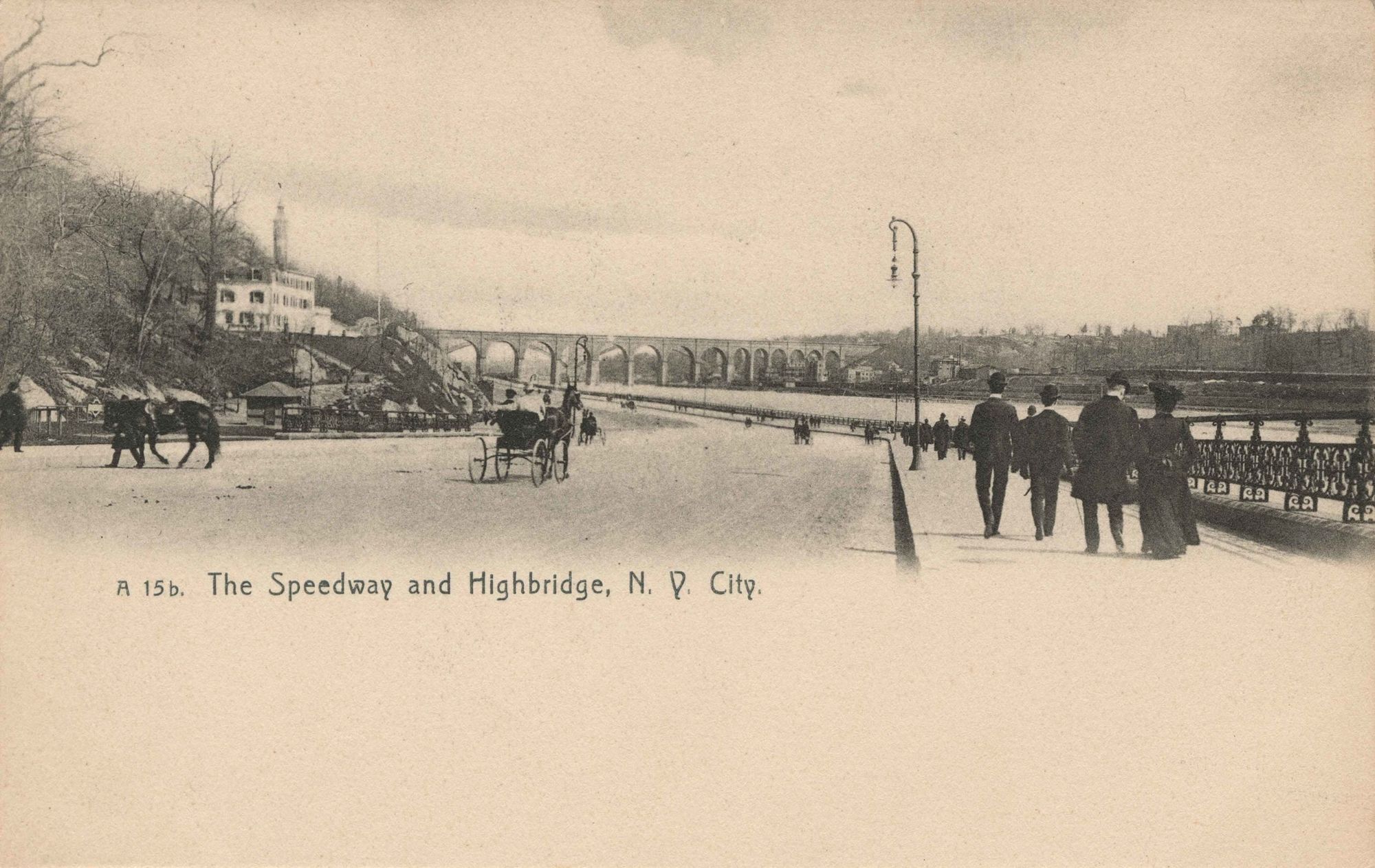
The Harlem River Speedway was a subject on the virtual talk we hosted, “The Forgotten Harlem River,” by photographers Nathan Kensinger and Duane Bailey-Castro. Bailey-Castro, a lifelong Bronx resident who has focused much of his work on the Harlem River bridges, showed these vintage postcards he had acquired and the short silent film below from 1903 entitled “Parade of Horses along the Speedway” from the American Mutoscope and Biograph Company.
Construction of the Harlem River Speedway began in 1894 with the carving of the bluffs overlooking the river. After its opening in 1896, it quickly became a tourist attraction where people could watch horse races on the track as well as boat races on the river. The track was as wide as one-hundred feet in some areas, allowing for several carriages to compete at once. The natural beauty of the surrounding scenery attracted spectators from all social classes. Thousands from around the country visited to watch planned parades and competitions, and rich sportsmen were satisfied with their exclusive speedway, using it heavily to train and display their horses.
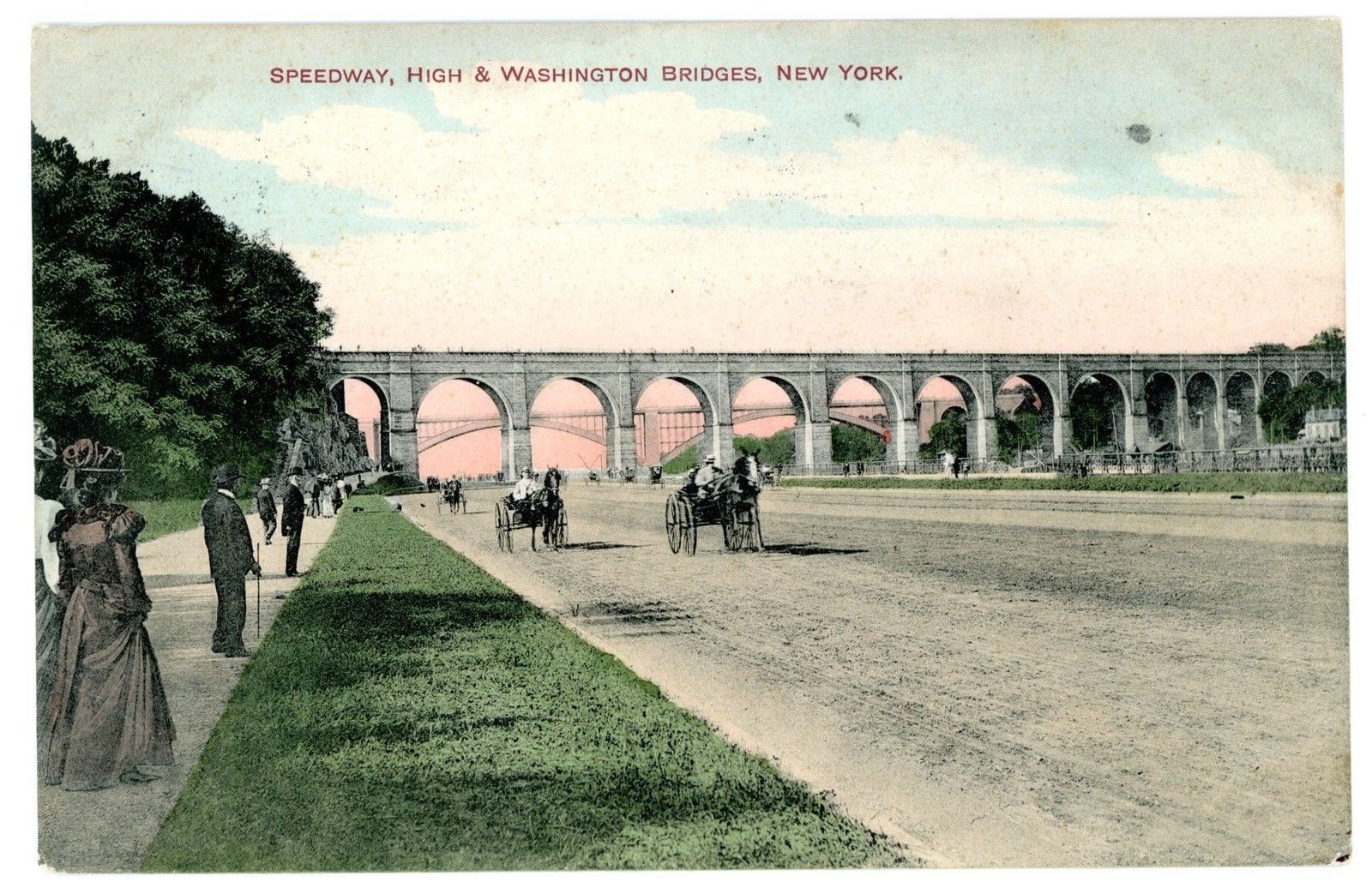
There was backlash about the cost of the speedway shortly after its opening. Around $5 million were spent on construction and court cases, exceeding the original estimate of $1 million. Though newspapers acknowledged it to be a great work, they also noted the other ways in which the mayor could have spent the money, with reporter Charles C. Sargent of Munsey Magazine writing, “the sapient rulers of New York have spent in making the Speedway money that would have built thirty school houses, and would have provided twice over for the twenty-five thousand children turned away last September from the overcrowded primary schools of the metropolis.”
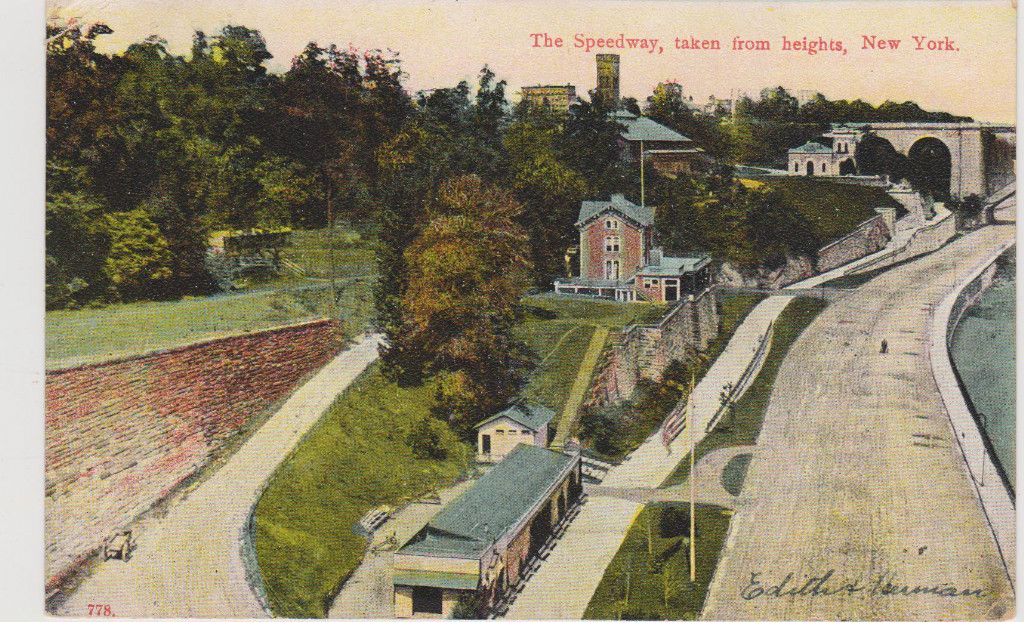
As the city grew and automobiles became widely used, New Yorkers began to push for the opening of the speedway to the public around 1909. Aristocrats turned their attention to motorcars, and in 1916 The New York Times reported that there were fewer than 100 carriages on the speedway a day. With the gradual decline in interest, the speedway was opened to automobiles in 1919, and in 1922 it was paved and opened to general traffic. It was then renamed the Harlem River Driveway.
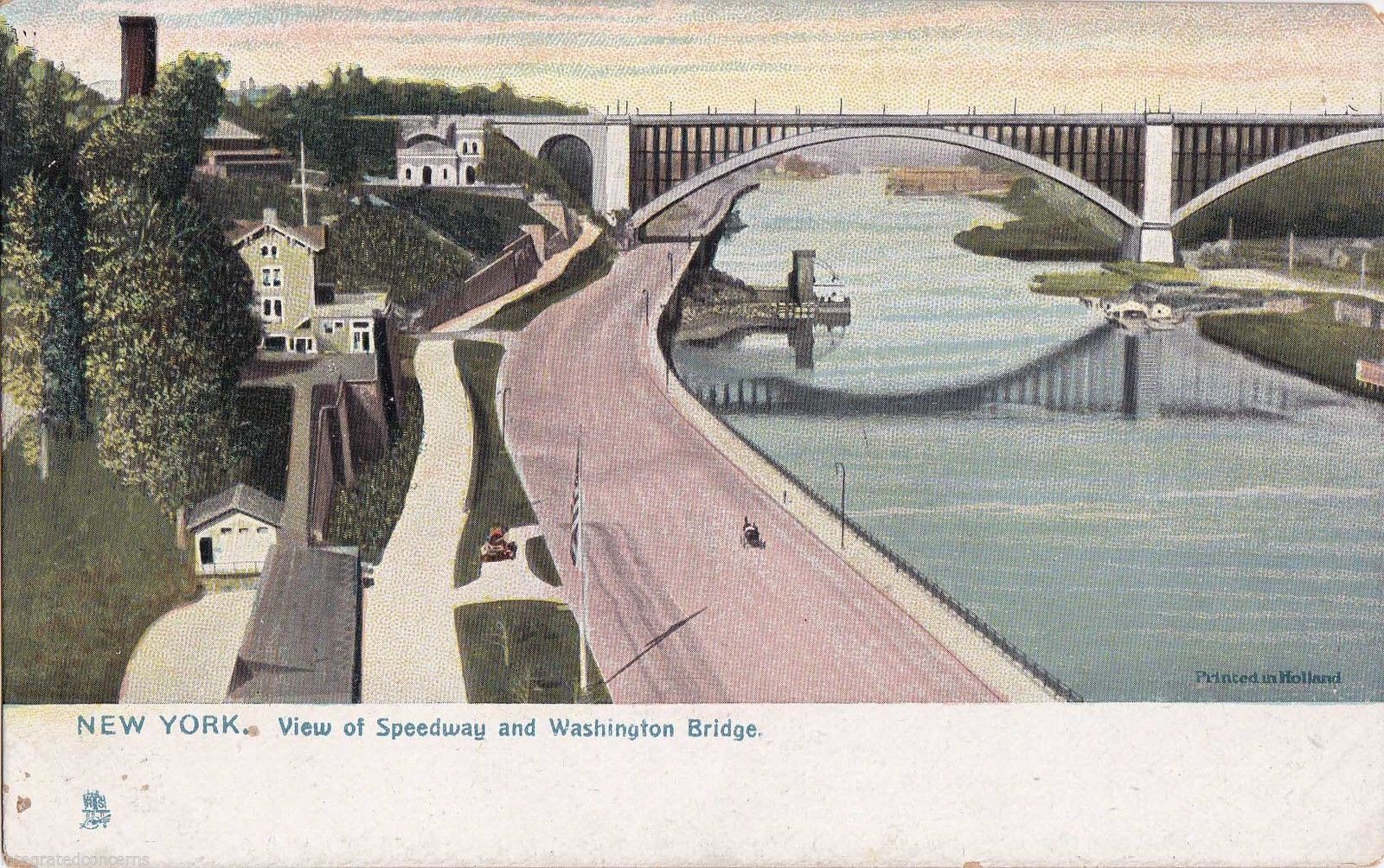
Parks Commissioner Robert Moses played an integral role in connecting Harlem River Drive to the rest of Manhattan. In 1940 he began construction on linking the Harlem River Drive to the Henry Hudson Parkway, the George Washington Bridge, and the East River Drive (now the FDR Drive). The Triborough Bridge and several bridges joining the Major Deegan Expressway would provide a flow of traffic into the Drive. Completed in 1964, the project cost around $38 million.
Today, you can drive or bike along the track where horse-drawn carriages once raced to the cheers of lively spectators. Though the world has drastically changed since then, the road and the scenic view of the Harlem River still remains.
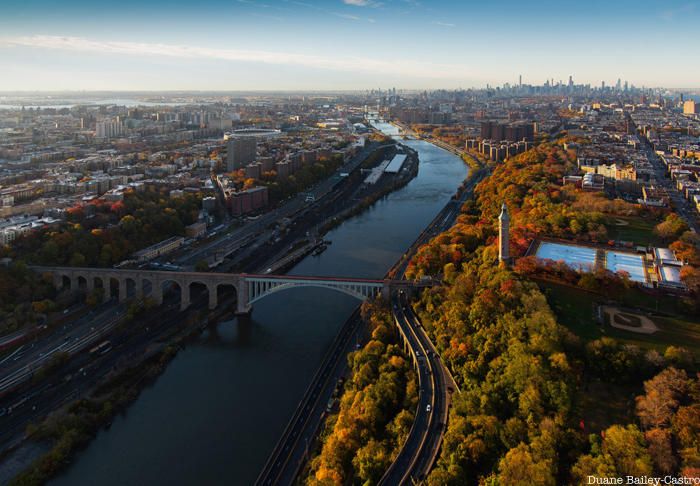
See a recording of the talk, The Forgotten Harlem River, in our members-only video archive available to Untapped New York Insiders (use code JOINUS for two months free!) Next, check out more photos by Duane Bailey-Castro of the Harlem River, taken five years after the re-opening of High Bridge.
Subscribe to our newsletter